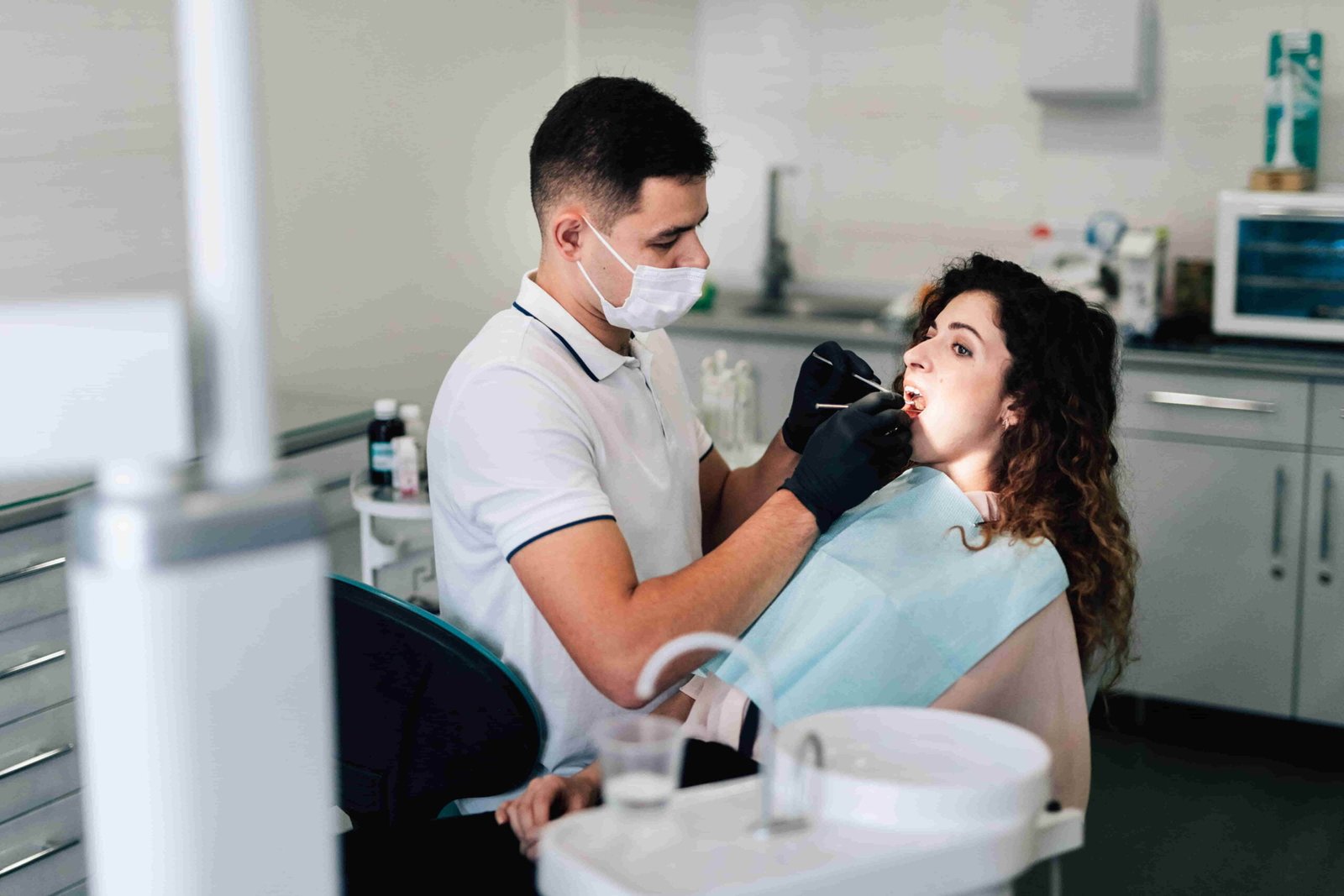SEARCH SPONSORED SCHOOLS
Not all sponsored colleges have laptop programs
FIND COLLEGES NOW!
Complete the following questionnaire and we will match you with the right schools.


Occupational Therapist Aide
Occupational Prestige Score: 55.37
Employment in 2023: 4,430
What do Occupational Therapist Aides do? Occupational Therapist Aides support occupational therapists and occupational therapy assistance in providing therapy services to individuals recovering from illnesses or injuries, helping them gain or regain the skills needed for daily living and working. Aides work under close supervision of an occupational therapist or occupational therapy assistant and perform delegated, selected or routine tasks, such as preparing the patient and treatment room.
Education Needed: Associate degree for Occupational Therapists. For Occupational Therapists Aides, a High school diploma/equivalent, plus on-the-job training is typically provided.
Qualities: Occupational therapist aides must be supportive and compassionate, as they help patients regain their independence during emotionally challenging times. Aides work alongside occupational therapists, managing schedules, preparing treatment areas, and ensuring a smooth flow. Good organizational skills allow them to anticipate the therapist’s needs. This profession thrives on a genuine desire to make a positive impact, so aides must enjoy helping others.
Salary: The mean salary can be up to $36,970 yearly, or $17.77 an hour.*
Projected job growth: The Bureau of Labor Statistics predicts a 23% growth* in employment in the next 10 years, mainly due to an aging population and increased demand for occupational therapy services.
*Salary and employment figures are based on a national average and may vary by location.

Pharmacy Aide
Occupational Prestige Score: 48.43
Employment in 2023: 43,830
What do Pharmacy Aides do? Pharmacy Aides are the friendly faces of the pharmacy. They provide customer service and keep things running smoothly. They assist pharmacists with administrative tasks in retail or hospital pharmacies, including stocking shelves, taking inventory, and handling transactions. They may also manage customer inquiries but do not handle medications directly.
Education Needed: Pharmacy Aides need a high school diploma/equivalent or may complete a postsecondary program in pharmacy technology. Additionally, on-the-job training is common.
Qualities: Pharmacy aides must be detail-oriented and have ability to follow instructions precisely. Because they are the faces of the pharmacy and in charge of customer interactions, good customer service skills are a must.
Salary: The median salary can be up to $36,200 yearly, or $17.41 an hour.*
Projected job growth: Stable or slight growth, with variability based on retail pharmacy needs and healthcare settings.
*Salary and employment figures are based on a national average and may vary by location.

Physical Therapist Aide
Occupational Prestige Score: 49.07
Employment in 2023: 42,390
What do Physical Therapist Aides do? Physical Therapist Aides assist physical therapists in providing care that helps patients recover from injuries, surgeries, or improve mobility. Aides are supervised by physical therapists and help patients regain movement or manage pain, they assist patients in moving between therapy areas, and handle clerical tasks.
Education Needed: Associate degree for Physical Therapist Assistant. For Physical Therapist Aides, a high school diploma or equivalent and on-the-job training is typically provided
Qualities: A successful physical therapy aide enjoys physical activity. They are empathetic and have good communication skills that allow them to better connect with patients. They are moved by a desire to help others.
Salary: The median salary can be up to $33,520 yearly.*
Projected job growth: The Bureau of Labor Statistics estimates an increase of 19%* in the next 10 years, a growth faster than average.
*Salary and employment figures are based on a national average and may vary by location.

Psychiatric Aide
Occupational Prestige Score: 49.75
Employment in 2023: 32,310
What do Psychiatric Aides do? Psychiatric Aides provide care for patients with mental illness or developmental disabilities, offering support for daily activities, ensuring patient safety, and assisting in therapeutic activities under the supervision of medical staff.
Education Needed: Psychiatric technicians need a postsecondary certificate. Psychiatric Aides need a high school diploma or equivalent. Training or certifications in mental health or nursing assistance can be beneficial. On-the-job training is usually provided.
Qualities: Working with individuals facing mental health challenges means psychiatric aides must be patient and have strong interpersonal skills to build trust and connection with their patients. Resilience is important when handling emotionally charged situations and managing the emotional weight of supporting patients.
Salary: The median salary can be up to $39,160 yearly, or $18.83 an hour.*
Projected job growth: The Bureau of Labor Statistics estimates a projected growth of 9%* over the next 10 years. Many of these opening due to the increase in mental health care, as well as growing awareness of the importance mental health.
*Salary and employment figures are based on a national average and may vary by location.

Anesthesiologist Assistant
Occupational Prestige Score: 63.93
Employment in 2019: 125,500
What do Anesthesiologist Assistant do? Anesthesiologist Assistants are highly trained healthcare professionals who work under the supervision of licensed anesthesiologists to develop and implement anesthesia care plans for patients undergoing surgery. Responsibilities may include taking patient medical histories, performing physical examinations, operating anesthesia equipment, and ensuring patient safety and comfort during surgery.
Education Needed: Anesthesiologist Assistants will need a Bachelor’s Degree in Anesthesiology or a related science field, such as biology or chemistry. Additionally, they must graduate from an accredited anesthesiologist assistant program, such as a Master’s Degree. National certification as a Certified Anesthesiologist Assistant (CAA) is required.
Qualities: Anesthesiologist assistants navigate a very demanding role requiring precision, which is why attention to detail is vital, to say the least. Strong analytical skills are necessary during rapid assessments and problem-solving under pressure. Anesthesiologists assistants must be calm and collected and perform well in high-stress environments. Excellent communication is key for successful collaboration with the surgical team.
Salary: The average salary can be up to $130,020 yearly, but may range from $42,020 and $54,263.*
Projected job growth: Moderate growth due to the increasing use of anesthesia for precise diagnostic and therapeutic purposes.
*Salary and employment figures are based on a national average and may vary by location.

Medical Assistant
Occupational Prestige Score: 55.25
Employment in 2023: 763,040
What do Medical Assistants do? Medical Assistants perform administrative and clinical tasks in healthcare facilities, such as taking patient history, measuring vital signs, assisting with examinations, and managing patient records.
Education Needed: Typically, medical assistants need postsecondary education, such as a certificate. Some med assistants enter the occupation with their high school diploma and learn through on-the-job training, though some employers may prefer to hire individuals with a certificate.
Qualities: Medical assistants wear many hats, meaning organizational skills are required for the job. Versatility is crucial as they handle a variety of duties, from taking vital signs to scheduling appointments or assisting with examinations. Empathy allows medical assistants to connect with patients, ease anxieties and provide emotional support to patients.
Salary: The mean salary can be up to $42,000 yearly, or $20.19 an hour.*
Projected job growth: The Bureau of Labor Statistics predicts a faster-than-average increase of 14%* in the next 10 years.
*Salary and employment figures are based on a national average and may vary by location.

Dental Assistant
Occupational Prestige Score: 47.54
Employment in 2023: 370,690
What do Dental Assistants do? Dental Assistants work closely with dentists. They support dentists in two main ways: chairside and administrative. During procedures, dental assistants prep the area, hand tools, suction fluids, and follow the dentist’s instructions. On the administrative side, they schedule appointments, manage records, answer phones and keep everything sterilized and organized.
Education Needed: There’s different paths to becoming a dental assistant. Some states have no formal education requirements, meaning assistants learn through on-the-job training. However, some states do require assistants to graduate from an accredited program and pass an exam.
Qualities: Because dentist assistants sterilize equipment and prepare medications, as well as ensure accurate information for patients, they must be very detail-oriented and organized. Good manual dexterity allows dentist assistants to handle delicate instruments effectively during procedures. Being able to follow directions and having a genuine interest in healthcare are qualities a successful dentist assistant has.
Salary: The mean salary can be up to $46,540 yearly, or $22.38 an hour.*
Projected job growth: The Bureau of Labor Statistics predicts a faster-than-average increase of 7%* in the next 10 years. Some of this increase can be explained by growing awareness of oral health.
*Salary and employment figures are based on a national average and may vary by location.

Occupational Therapist Assistant
Occupational Prestige Score: 56.84
Employment in 2022: 46,090
What do Occupational Therapist Assistants do? Occupational Therapist Assistants work alongside occupational therapists to help patients regain their independence in performing daily activities after illness, injury, or disability. They may implement therapeutic plans, instruct patients in exercises, and report progress. While OTAs usually don’t perform all tasks independently, they play a crucial role in the success of occupational therapy and supporting patients on their road to recovery. OTAs spend much of their time on their feet setting up equipment and providing therapy to patients.
Education Needed: To become an occupational therapy assistant, you will need an Associate’s Degree from an accredited occupational therapy assistant program. The practice of occupational therapy assistants is regulated in all states in the U.S. Licensure is required.
Qualities: In the world of rehabilitation, compassion and patience are key for supporting individuals through often frustrating challenges. Creativity allows OTAs to find innovative solutions and adapt tasks to individual needs. OTAs also need to thrive in team environments and working in collaboration with therapists, patients and families to create and follow a successful recovery plan.
Salary: The median salary can be up to $67,010 yearly, or $32.22 an hour.*
Projected job growth: The Bureau of Labor Statistics predicts a faster-than-average increase of 23%* in the next 10 years.
*Salary and employment figures are based on a national average and may vary by location.

Physical Therapist Assistant
Occupational Prestige Score: 54.22
Employment in 2023: 104,000
What do Physical Therapist Assistants do? Under the direction of physical therapists, PTAs help patients who are recovering from injuries and illnesses regain movement and manage pain. They are involved in the direct provision of therapy exercises and treatments.
Education Needed: Usually, you need an Associate’s Degree from an accredited program plus a license or certification to enter the occupation.
Qualities: Physical Therapist Assistants (PTAs) are the supportive backbone of physical therapy. They need a blend of empathy and patience to guide individuals through rehabilitation. Strong communication skills help build trust and motivate patients. But the job also demands physical stamina! PTAs often assist with transfers, positioning patients, and demonstrating exercises, requiring endurance throughout the day.
Salary: The median salary can be up to $64,080 yearly, or $30.81 an hour.*
Projected job growth: The Bureau of Labor Statistics predicts a faster-than-average increase of 19%* in the next 10 years.
*Salary and employment figures are based on a national average and may vary by location.

Physician’s Assistant
Occupational Prestige Score: 67.42
Employment in 2023: 145,740
What do Physician Assistants do? Under the supervision of a physician, physician assistants (PAs) diagnose illnesses, develop and manage treatment plans, prescribe medications. They work in all areas of medicine, including primary care and family medicine, emergency medicine, and psychiatry.
Education Needed: Usually, a Master’s Degree from an accredited PA program is required. Additionally, physician assistants must be licensed.
Qualities: Physician assistants wear many hats. Clear communication builds trust with patients and ensures smooth collaboration. Their decision-making skills are sharp, diagnosing and treating patients while exercising sound judgment. Empathy allows them to connect with patients and provide compassionate care. Finally, resilience keeps them going in demanding environments with challenging situations.
Salary: The median salary can be up to $130,020 yearly, or $62.51 an hour.*
Projected job growth: The Bureau of Labor Statistics predicts a faster-than-average increase of 27%* in the next 10 years.
*Salary and employment figures are based on a national average and may vary by location.

Speech-Language Pathology Assistant
Occupational Prestige Score: 61.51
Employment in 2022: 171,400
What do Speech-Language Pathology Assistants do? Speech-Language Pathology Assistants work under the supervision of a licensed speech-language pathologist to support patients with communication disorders. They assist with screenings, provide therapy under the pathologist’s direction, and prepare materials. Some Speech-Language Pathology Assistants work in schools, while others work in hospital or nursing and residential care facilities.
Education Needed: If you want to become a Speech-Language Pathology Assistant, you will need an Associate Degree or certification in speech-language pathology assisting. Additionally, state licensure or registration may be required.
Qualities: Speech-language pathology assistants rely on excellent communication to guide patients through exercises and clearly document progress. Patience and a meticulous nature are key as they support individuals with complex communication challenges, celebrating small improvements along the way. They also thrive in diverse environments, working with patients from all backgrounds and age groups.
Salary: The average salary can be up to $58,790 yearly, or $28 an hour.*
Projected job growth: Expected growth due to increased awareness and treatment of speech and language disorders.
*Salary and employment figures are based on a national average and may vary by location.

Veterinary Assistant and/or Laboratory Animal Caretaker
Occupational Prestige Score: 52.09
Employment in 2022: 114,800
What do Veterinary Assistants and Laboratory Animal Caretakers do? Veterinary Assistants and Laboratory Animal Caretakers look after animals in clinics, animal hospitals, and research labs. They feed, water, clean, and exercise animals, and may assist with examinations and procedures. Veterinary Assistants and Laboratory Animal Caretakers usually work in clinics, animal hospitals, and research laboratories.
Education Needed: Most Veterinary Assistants and Laboratory Animal Caretakers have a high school diploma or equivalent and learn on-the-job. However, veterinary assistant programs can be beneficial when applying for a job.
Qualities: A passion for animals is essential for vet assistants and laboratory animal caretakers. They need patience and physical ability to handle animals of all sizes, while keen observation helps them spot subtle signs of illness or distress. This job can be physically and emotionally demanding, so resilience is a must.
Salary: The median salary can be up to $36,440 yearly, or $17.52 an hour.*
Projected job growth: The Bureau of Labor Statistics predicts a faster-than-average increase of 20%* in the next 10 years. This rise is likely explained with an increase in pet ownership and awareness of animal well-being.
